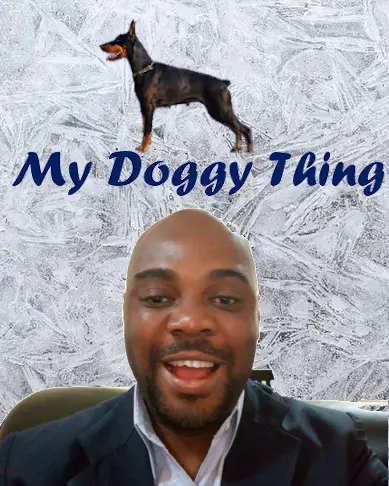We all love our dogs, we want to spend more time with time, that means we love to play with our dogs, cuddle our dogs and interact with them by any means possible, and why not, they are meant to be sources of immense joy to us. But what if you always itch when you get close to your dog? What does that mean? Especially if you are the only one in the family that itches after coming close to your dog. You will definitely start asking yourself the question.
Why does my dog make me itch?
The simple answer if you itch after playing or getting close to your dog, then you are probably allergic to something your dog is carrying.
.
.
Contrary to popular belief, it’s not your dog’s hair that spreads allergies, what spreads allergies is usually from the dog’s skin or saliva and they are called allergens. A dog’s skin sheds dead cells from time to time. These dead cells are called danders which contain the allergens that make you itch. You can also be allergic to dog saliva as the same allergens are present in them.
Other symptoms that show you may have an allergic reaction to your dogs are:
a.) Skin rash from a dog.
b.) Red itchy and watery eyes.
c.) Running nose.
d.) Nasal congestion.
e.) Coughing.
f.) Sneezing.
g.) Wheezing.
h.) Shortness of breath.
NB. It is worth noting that if you are showing these signs when you are close to your dog, it is very likely that you are allergic to something else. Dogs can carry substances from various places they go to be it wild grass fields, other dogs whether wild or domesticated, reactions to some food products, etc.
So you may be saying “I’m allergic to my dog is there anything I can do?”
Here are things you can do if you are allergic to your dog.
.
1.Put some distance between you and your dog.
You have to separate yourself from your dog, which means no hugging and no touching in the meantime. Put your dog in a place where they can still be comfortable but you do not need to come in contact with them. A dog house outdoor, a room that you don’t use in the house. Anything to keep him or her from the places where you normally stay in at home.
An extreme measure would be to give up your dog for adoption, but we are dog lovers here, giving your dog up for adoption would be the last thing anyone of us would do without going through all possible options.
.
2.Confirm your type of allergy from a Doctor.
Whether you confirm from a medical doctor or a vet doctor, the main thing is to be sure what kind of allergy you are prone to. They would probably direct you to some lab handled by an allergist who would run the test on you.
The test is usually run by pricking your skin and dropping some dog protein on the pricked spot. Reaction to this normally takes place between fifteen to thirty minutes.
If you are lucky, you may find out that you are not allergic to your dog. Instead, you are allergic to something else like some specks of dust, pollens, etc. Your dog in this case acted as a carrier of these allergic agents. This makes the management of this problem easier for you.
Even if you find out that you are allergic to your dog, there are still treatments and management systems you can use to still get the best out of your dog. Now that should be some big relief to many dog parents in this situation.
.
3.Take your medication.
Whatever medication you have been given, make sure you keep up to date on them. Remember that in this situation, you are the one in danger and not your dog. If you are involved in immunotherapy treatment, be sure never to miss an appointment till all sessions are completed.
Immunotherapy involves the injecting of the allergins in small doses so that your body would build resistance to the allergy. A complete session can take several months to complete. In simple terms, look at it as a series of vaccination treatments.
.
4.Go to the extreme with your house cleaning.
The problem with dog dead skins or danders is that they can hide anywhere in your house especially when your dog has been using that space. Your floors, furniture, rugs, curtains, beds, etc, nowhere is safe for you so the next best thing for you to do is to take extreme measures when cleaning your house.
Go some extra length to make sure that there are no places where specks of dust can hide, do away with items of furniture and things that can hold dust easily, use vacuum cleaners with HEPA filters and consider getting a central air cleaner for your house instead of normal heat or airconditioning units. The air cleaner removes dust particles and stuff from the air around while a normal air conditioner tends to just circulate the air in the area, so using an air conditioner might only cause the dander to get to your location.
.
5.Control your dog’s movement.
This is better done by someone in the house who is not allergic to your dog. You need to make sure that there are areas in your house that your dog cannot have access to. If you live in a house with a yard, consider providing for him or her a dog house with every necessary thing they might need in it. This way they are comfortable and you remain less exposed.
.
6.Bathing and Grooming Regularly.
Again this is better handled by someone in the house who is not allergic to your dog. If you live alone, consider outsourcing the responsibility to a dog groomer.
Bathing and grooming your dog consistently helps in ensuring that your dog is not just clean but also dander-free. The grooming part especially helps to remove the dead skin cells making it less likely that your dog would be leaving enough of it around to be able to cause harm.
Be sure to liaise with your vet doctor so that you can agree on a proper bathing and grooming frequency.
.
7.Use gloves and shielding lotions.
It may be that you just want to interact with your dog one way or the other after you have applied all the points above. Using a glove and a shielding lotion is a good way to go about it. Even with just the shielding lotion, it makes it so that the danders from your dog are unable to stick to your skin therefore it would be unable to stay on your skin long enough to cause an allergic reaction. The gloves are just taking extra measures so that you are more sure there won’t be any danders on your hands after interacting with your dog.
It is important that you immediately send your clothing for dry cleaning or do it yourself immediately after these interactions and before stepping into your safe spaces. This way, you prevent the possibility of bringing the allergens into your safe space.
Unfortunately, there is not much protection if you are getting the allergen by breathing it in and not just your skin itching. It doesn’t mean that you can’t interact with your dog, no. It just means that you have to avoid contacts that come too close like hugging and kissing them.
.
8.Be mindful of visitors and friends who have dogs.
Although you don’t really have much control over this, explaining your situation with your friends who own dogs would advise them on how to behave around you. Unless this friend has some evil motive towards you(then he or she wouldn’t be a friend), your friend would adjust himself or herself to help protect you better from the allergy.
Having gone through all the above, there is still another point to consider and that is that some breeds shed less hair than others hence you are likely safer and not at high risk when around them. This augers well for new dog parents adopting one into their household.
Testing yourself and confirming your allergy status would go a long way in helping you choose the correct dog breed you can actually live with.
Some Breeds that shade less than others:
Miniature Poodle
Small in stature, this is a suitable breed for people allergic to dogs, they are known for their intelligence and low shedding of their hair.
Maltese
Another small dog breed having a flat and silky coat, they are suitable for people allergic to dogs
Some terrier breeds
Like the Australian Terrier, the Irish Terrier, the Airedale Terrier, and the Tibetan Terrier all intelligent dogs but best of all are low hair shedding dogs.
IN CONCLUSION
Your itching is probably a reaction to some allergy, from the above you can manage it and still have a meaningful relationship with your dog. The important till is to follow your doctor’s advice to the last letter. It is important to keep in mind that you are the one in danger here and not your dog. Be safe

Hi, I am Charles Nwankwo Editor-in-Chief, Mydoggything.com. Gleaning from Professional Dog Trainers, behaviorist, Registered Veterinarians, and Breeders. We are passionate about making dog care easy for you. My job is to make sure that you get the best-updated dog care information to understand and take care of your dog or dogs.
